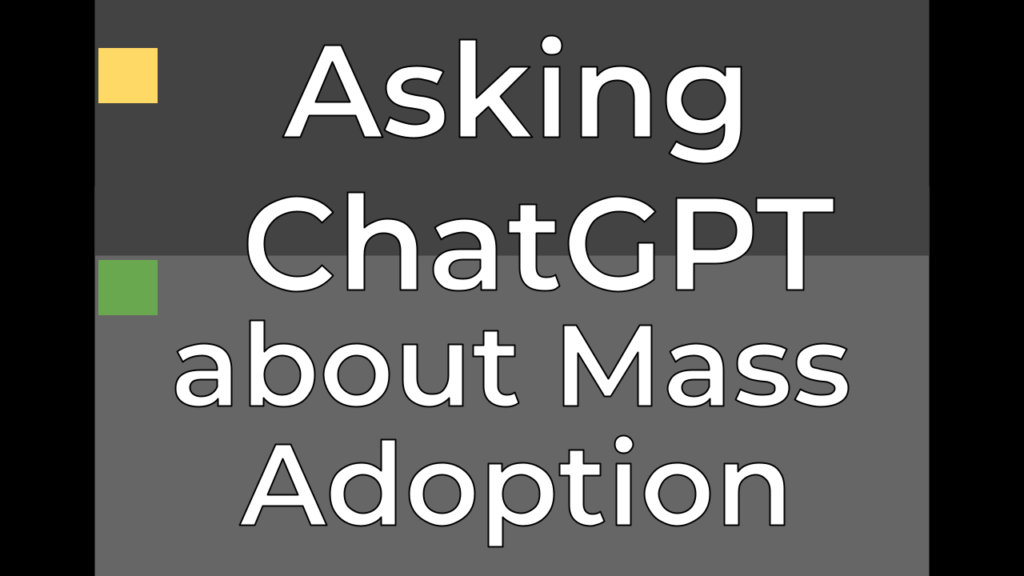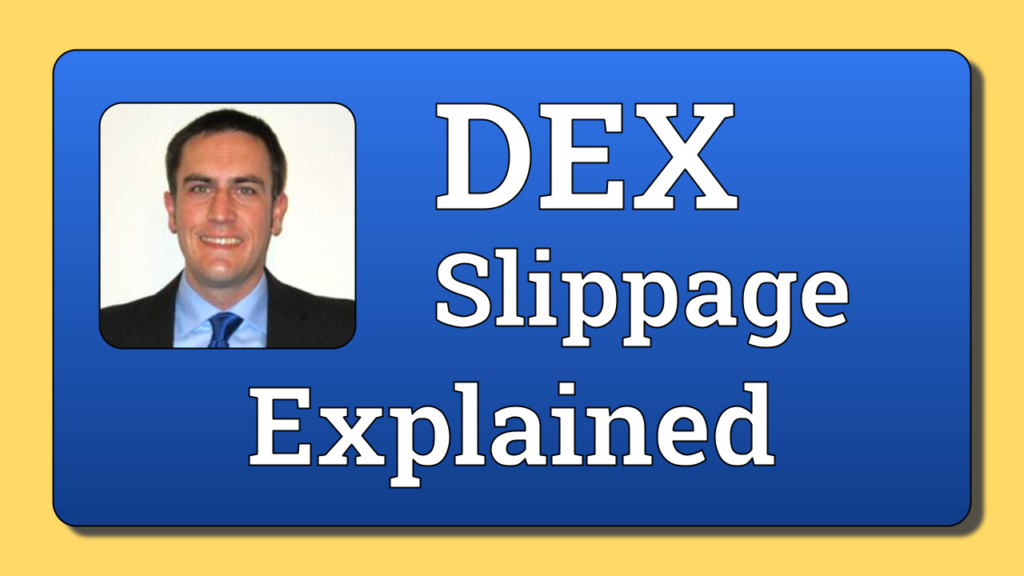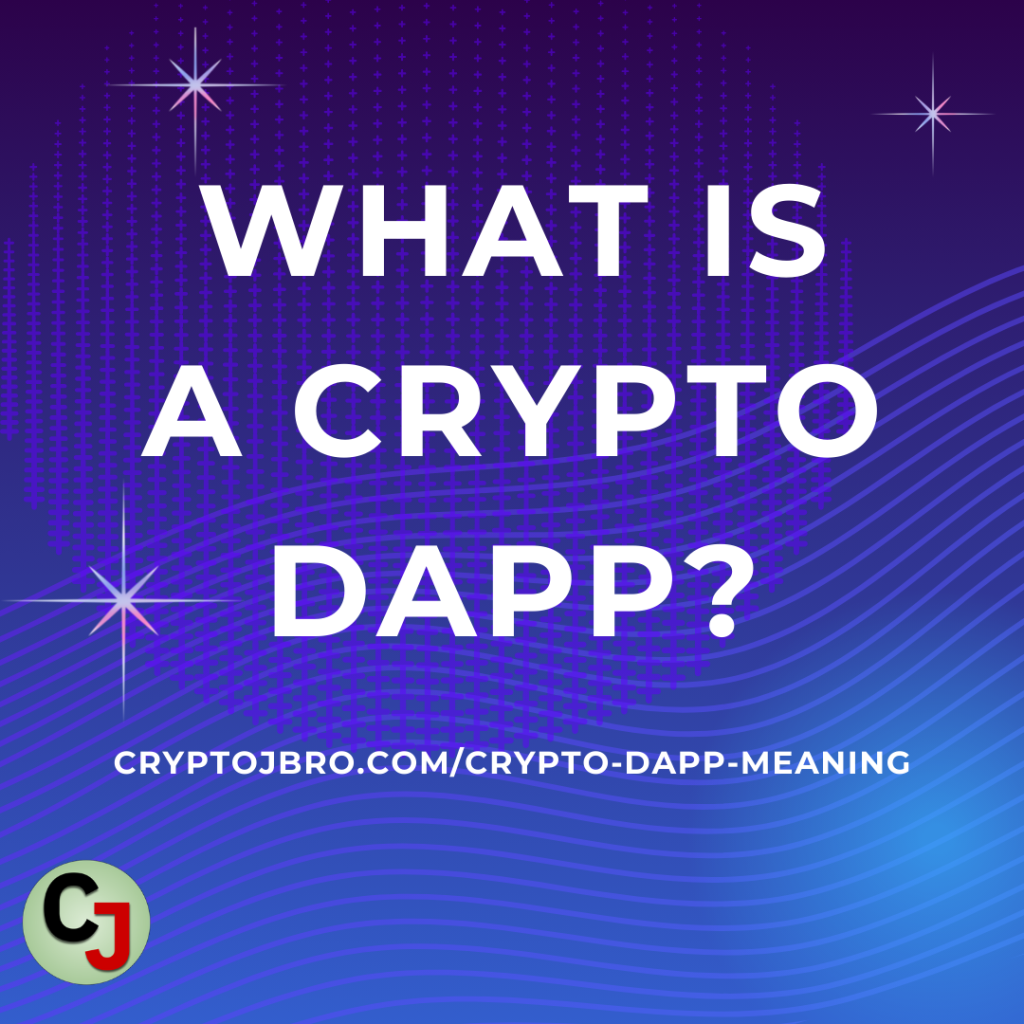Decentralized exchanges (DEXs) are not perfect and have their disadvantages. The technology is evolving and needs to address certain problems that have come about. This short video covers it.
That was a lesson from my free DEX course.
Cryptocurrency Education for a Decentralized Revolution
Decentralized exchanges (DEXs) are not perfect and have their disadvantages. The technology is evolving and needs to address certain problems that have come about. This short video covers it.
That was a lesson from my free DEX course.
This video lesson covers the advantages of decentralized exchanges (DEXs) over centralized ones. It’s part of my free DEX course (here). There are still many hurdles to overcome in the DeFi world, but the promise is there.
Decentralized exchange tech is revolutionizing the way digital assets are traded. By using blockchain technology, they allow for greater transparency, privacy, security, and control of assets.
One of the main advantages of DEX platforms is the heightened security. Unlike centralized exchanges, decentralized ones eliminate the need for users to trust a central authority with their funds. We trade directly with our hardware wallets.
Transactions occur directly between users through smart contracts, so funds are only accessible by the recipient. This decentralized nature significantly reduces the risk of hacking, as there is no single point of failure.
Users retain control over their private keys, giving them complete ownership and custody of their cryptocurrency. This reduces the risks that come with centralized custodial wallets.
Privacy is a large driver of decentralized tech. DEX platforms enable thsi without the need for Know Your Customer (KYC) procedures. Users can trade anonymously, keeping their privacy and protecting their identities.
Another crucial advantage of DEXs is the transparency they bring to the table. Blockchain technology provides an immutable ledger of all transactions. These transactions are publicly verifiable, allowing users to verify and audit the platform’s activities for themselves.
This transparency fosters trust among users since it eliminates the murkiness associated with centralized exchanges. Users can have confidence that trading volumes, fees, and other relevant data are trustworthy.
Decentralized exchanges offer a wide range of tradable assets such as cryptocurrencies and emerging tokens. Most DEXs allow us to add a token for trading as long as the blockchain is supported on it too.
Centralized exchanges have control over crypto listing decisions. DEX platforms are open and accessible to anyone who wants to create a token and list it. This promotes innovation and allows users to explore investments that may not be available on centralized exchanges. It’s one way to get into brand new coins at basement prices.
DEX aggregators are also coming into existence. This is a vital development where these platforms bring in trade pairs from other DEXs. A trader can more easily get the best price when comparing many exchanges. They are like Expedia for cryptocurrency!
DEX platforms transcend borders, enabling users around the world to participate in trades and investments. As long as users have an internet connection and the correct wallets, they can access and a DEX platform.
This accessibility empowers individuals in underserved regions. They can participate in the decentralized financial ecosystem without being subjected to the limitations imposed by traditional financial systems. All they need is a cheap phone and a connection to use DEX apps!
Decentralized exchanges offer many advantages over their centralized counterparts. Their improving tech is making them more popular among cryptocurrency and DeFi participants.
From better security and privacy to transparent operations and user control, DEXs provide an improved trading environment. As the cryptocurrency evolves, decentralized exchanges will play a central role in trading crypto and tokenized assets.
Smart contracts are ushering in a slew of new industries. One of the most impactful is the decentralized exchange (DEX) such as Uniswap. Built on the Ethereum network, it was the first DEX run by smart contracts, (though an earlier one existed on the XRP Ledger).
Here’s my video lesson about this new type of decentralized app which allows for peer-to-peer cryptocurrency exchange.
While blockchain DEXs have existed on the XRP Ledger and XLM network long before Uniswap, this new type has been exploding in popularity since 2018. The smart contracts allow for providers to lock up pairs of coins. Traders then swap their cryptocurrency against these “liquidity pools” and the liquidity providers get a cut of the fees. There is no middleman exchange or company to hold the tokens that are being traded.
The smart contracts that run the trading cannot be changed by any bad actors since they exist on a blockchain. These programs wait to execute trades between the traders and liquidity providers. Basically, the swaps happen between the wallets of the traders and the pools of assets.
This revoltionary way of trading peer-to-peer will grow in the future. As decentralized tech advances, it will become more secure, faster, and have less fees. Many projects are linking up various blockchain networks, so cross-chain coins will be swapped more frequently too. I see the future of DEX trading as one giant liquidity pool across the whole industry!
In this video, I asked ChatGPT about mass adoption of cryptocurrency and blockchain. Mass adoption is when decentralized tech is widely accepted and used by governments, big businesses, and banks around the world. At least, that’s what it means to me. There are lot os other definitions, of course!
What is required for mass adoption of blockchain tech and cryptocurrency? Here is the video answer with a few of my rants for good measure:
For mass adoption of blockchain technology and cryptocurrency, several key factors are necessary:
It is important to note that the mass adoption of blockchain technology and cryptocurrency will likely be a gradual process, influenced by technological advancements, regulatory developments, and changing attitudes towards decentralized systems. (end)

This video explains the meaning of slippage in decentralized crypto exchanges (DEXs). It arises from a host of problems that are being fixed through many efforts. I cover those down below the vid.
Slippage means getting a different price on a trade compared to what was quoted. It causes problems for traders and discourages people from using DEXs.
Price discrepencies arise from many issues such as low liquidity, volatility in prices, and network congestion that back up trades. For now, slippage comes with the territory of decentralized exchange. Improvments will come in the near future.
There are many technology improvements in the crypto space that will help traders get a better price. Here’s a few that I see coming into existence which will improve liquidity:
There is a horde of developers and experts working to improve slippage and other issues for decentralized exchange. As a result, I see the future as one giant liquidity pool where everyone is a partner instead of a competitor. It seems utopian, but we’ve seen crazy shit in the 2020’s so far!

A crypto DApp stands for “decentralized application”. These are new types of apps and programs that interact with a blockchain or other type of distributed network. The front end (user interface) looks like a regular app in most cases, but the underlying technology is what makes it a “DApp”.
The backend is a distributed network instead of a centralized server, though sometimes there needs to be a mix with a database for some functions.
Blockchain DApps are secured by network nodes that rely on new advances and techniques in cryptography. The code on these decentralized networks (called smart contracts) can’t be modified once uploaded. This makes DApps new because they can’t be edited by a central server. A new version has to be uploaded by the developer.
DApps are popping up for many uses like decentralized finance (DeFi), gaming, social media, gambling, and collectibles. There are a huge number of them. You can check out a giant selection on DAppRadar – here.
Decentralized apps will revolutionize many sectors including healthcare, asset trading, real estate, and supply management (to name a few). They will do this by the decentralized catch phrase of “cutting out the middleman.”
These new apps operate peer-to-peer without a company, mediary, or central servers controlling the backend stack. The unchangeable code is what controls the rules of interaction.
Additionally, security is being improved with DApps. The decentralized network secures data with heavy encryption while limiting access points to hackers.
DApps came into existence through the invention of distributed computing. The Ethereum network was the first to enable immutable smart contracts. The number has swelled to hundreds of smart contract platforms now. They are trying to solve the problems of speed, scalability, security, and zero fees as they evolve. Wider adoption will continue as companies and individuals see the benefits of these new DApps.
Decentralized networks, computing, and apps are a revolution that many compare to the invention of the Internet. They are reshaping the ways of online business by increasing automation and reducing the need for centralized control. The transformation is picking up pace and will radically alter our Internet infrastructure.
